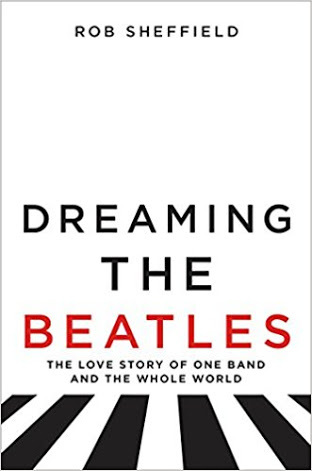More on this book
Community
Kindle Notes & Highlights
Read between
June 4 - June 29, 2017
Only she could have turned such reserved English gents into tormented soul men. In Sixties photos, George looks much happier when he’s standing next to her, the Savoy-est of truffles.
‘There’s not much difference between a cell and a hotel room in Minnesota. And I do my best thinking in places without distractions.’
More than any other Beatle music, the White Album feels like a map tracing the points from boyhood to manhood—it has kiddie sing-songs; teenage lust; adult breakdowns of sex, death, destruction, religion, insomnia, and despair; ending with Ringo crooning a schmaltzy Old Hollywood lullaby. It’s grown men trying to speak the lost language of children.
“Something” isn’t about the woman, just the feelings she gives him, but the barely there lyric is perfect for his voice. He can’t find words to describe her, so he shuts up and hides behind his guitar. It’s a love song for Quiet Ones.
But he had a lot more to spend than other stars, in terms of his credibility; if John believed in you for a weekend, you got permanently famous. To this day, everybody in the English-speaking world knows what “primal scream” means, just because it was a thing John was into for a few months.
Paul’s exact words: “It was hell. But I only remember the good bits.”
Paul selected a life, closed the menu, and then lived the fuck out of that life without worrying his pretty little head about the other adventures he could be chasing. That’s not just rare, it’s insane. It is not what you or I would have done.
The experts slowly realized you didn’t need to live through the Sixties to participate in the Beatles, just as you didn’t need to witness the French Revolution to love Wordsworth. Yet it took time.
Ian MacDonald ends Revolution in the Head with a lament that music turned to garbage when the band broke up, for no less a reason than “something in the soul of Western culture began to die during the late Sixties.” Pop suffered its “catastrophic decline” in 1970, after peaking in 1966 (when the author was eighteen), and “only the soulless or tone-deaf” could fail to agree.
John has another song where he’s in this same love triangle, “Baby’s in Black,” except from another corner—he’s the living boy who can’t understand why the girl remains so deeply in love with the dead boy. She thinks of him, so she dresses in black, and though he’ll never come back, baby’s in black and John’s feeling blue.


